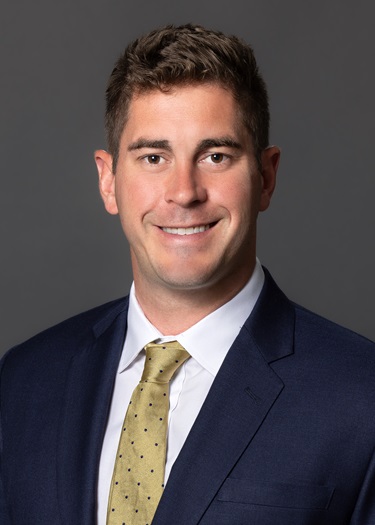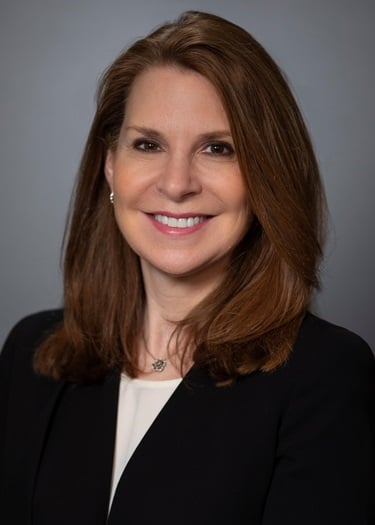Private Credit Perspectives
Understanding Call Protection In Private Credit: Key Considerations for Lenders
As the private credit market grows, and competition among lenders for deal flow is at record levels, call protection (or the lack thereof) is becoming a unique selling point for private credit lenders to gain a competitive edge for deal mandates over their peers. The decision to require a particular form of call protection (or no call protection at all) is primarily economic but often heavily negotiated between private credit lenders and their private equity sponsor customers.
This article summarizes the rationale for including call protection in credit documentation (as well as the different types of call protection), customary exclusions from call protection provisions, bankruptcy-related issues, and potential pitfalls to avoid when drafting these provisions in credit documentation.
Rationale for Call Protection and Different Types of Call Protection
“Call protection” (also known as a “prepayment premium” or a “make-whole payment”) is a fee paid when a borrower refinances or repays its debt early. The common rationale for including call protection in credit documentation is to compensate lenders for lost interest, upfront diligence costs, and/or redeployment costs in the event that the borrower prepays a loan before the lenders receive a sufficient return on their investment through regularly scheduled interest payments. Additionally, call protection can help protect against future lower interest rate spreads. A lender’s rationale and market conditions determine the type of call protection (if any) sought by the lender.
1. Hard Call
“Hard call” protection requires a borrower to pay a premium if the term loans are prepaid (other than from amortization), whether voluntarily, due to certain mandatory prepayments (e.g., a mandatory prepayment from the incurrence of unpermitted debt and/or resulting from an asset sale), or as a result of an event of default or bankruptcy event. Hard call protections are common in the private credit market and are typically structured as “102/101 hard call,” meaning a 2% premium if prepayment occurs on or prior to the first anniversary of the loan’s closing date and a 1% premium if prepayment occurs after the first anniversary of the loan’s closing date but on or prior to the second anniversary of the closing date.
Hard call protections often include carveouts for prepayments made in connection with any change of control (with respect to equity ownership) or initial public offering (IPO). In more competitive transactions, carveouts may also extend to prepayments made in connection with a “transformative acquisition” (i.e., an acquisition that is sufficiently material that it alters the overall credit profile of the borrower). The rationale for these exceptions is to allow private equity sponsors to continue to grow and expand the business beyond the constraints of the existing credit agreement. Also in competitive documents, private equity sponsors may also be allowed to forgo paying call protection in connection with other events such as material dispositions or when using internally generated cash.
2. Soft Call
“Soft call” protection is a more narrow protection and applies only upon a “repricing event.” A repricing event occurs when a borrower prepays or refinances the term loans with the primary purpose to obtain lower-cost debt.
A soft call structure is more typical in the broadly syndicated term loan B (TLB) market but can also be found in larger or more competitive private credit transactions. Soft call protection usually ends or “sunsets” after a period of six to 12 months. Because soft call protection is limited to repricing events, there is less need for the broad exclusions found in hard call provisions.
3. Make-Whole Premiums
“Make-whole” protection requires a borrower to pay a premium equal to the present value (typically using a discount value equal to the U.S. Treasury rate plus 0.50% per annum) of all future interest due through a specified date (typically tied to the “no call” period, which is often one or two years after the loan’s closing date). This structure is significantly more expensive than the fixed premiums discussed above and is most often used in high-yield notes, mezzanine debt, debtlike preferred equity, holdco financings, distressed lending, or where the business is difficult to finance and therefore there are fewer lenders competing for the opportunity to provide financing. Following the no-call period, the premium typically then changes to a hard call period (e.g., 102 / 101). The make-whole amount also typically includes the premium that would be payable if the debt were to be prepaid in the first year of the hard call period (e.g., 102).
Recent Market Trends
1. Soft Call Versus Hard Call
Historically, six-month soft call protection was limited to the broadly syndicated TLB market, where institutional investors often did not intend to hold the debt to maturity and could redeploy capital into a liquid market efficiently upon a prepayment. By contrast, private credit lenders in an illiquid market have a longer desired hold period and thus a stronger incentive to seek protections against early prepayments and reimbursement for diligence and redeployment costs. As a result, private credit lenders have historically sought make-whole and hard call protections. However, as private credit transactions become larger and competition among lenders intensifies, the private credit market finds itself competing more directly with broadly syndicated loans and as a result sometimes limiting call protection is necessary to gain and/or maintain market share.
2. New Equitylike Prepayment Premiums
A relatively recent development in the market has been the introduction of an equitylike form of call protection tied to the performance of the underlying asset. In this scenario, the premium is equal to a specific return, often based on either a multiple on invested capital (MOIC) or an internal rate of return (IRR). In these more unusual situations, the trigger will likely be heavily negotiated and is typically tied to certain negotiated prepayments or repayments. While these lenders may sacrifice some interim cash flow in the form of lower interest rate margins or fees, they secure an overall fixed return that may exceed traditional make-whole or hard call amounts and resemble equity returns. It is also important to note that MOIC or IRR premiums may be considered “contingent payment debt instruments” under the Internal Revenue Code, which can lead to present-day tax implications on future cash payments.
Potential Drafting Considerations
1. Bankruptcy Related Issues
Section 502(b)(2) of the Bankruptcy Code disallows claims for “unmatured interest.” Prior to 2022, bankruptcy courts generally upheld make-whole premiums as reasonable liquidated damages (and not unmatured interest) if properly triggered (i.e., upon acceleration).
However, in 2022, federal circuit courts in Ultra Petroleum and Hertz both ruled that premiums calculated using interest-based formulas represent unmatured interest (or the economic equivalent) and not liquidated damages.1
Two common pitfalls arise in drafting call protection provisions:
- Bankruptcy Triggering Events – Lenders and their counsel have developed provisions to guard against bankruptcy-related risks and to generally promote the enforceability of premium payment provisions, but these risks can often be overlooked when working on competitive and/or expedited transactions. For example, before reaching the “unmatured interest” issue, the premium at issue must be due and payable under the applicable documents. Therefore, the documents should be clear that the premiums are due and payable on the full amount of the outstanding term loans immediately upon an acceleration event, including a bankruptcy filing.
- “Yank-a-Bank” Provisions – Premiums should be triggered upon the exercise of any “yank-a-bank” provision (i.e., a provision allowing a borrower to replace a lender that is not consenting to a credit documentation modification that requires unanimous consent or the consent of each (directly) affected lender and is being approved by a majority of the other lenders) to prevent a borrower from amending the credit documentation to remove nonconsenting lenders without paying them their premium.
Call protection provisions serve as a vital tool for balancing the interests of lenders and borrowers in private credit transactions. For lenders, they provide compensation for diligence efforts, protect against premature repayments, and help secure a predictable return. For borrowers and their sponsors, negotiated carveouts can preserve flexibility for strategic transactions, such as exits or transformative events. Recent trends show that competitive market dynamics are pushing private credit lenders toward more flexible approaches, including shorter call periods or even “soft” call structures. At the same time, evolving case law highlights the importance of precise drafting to avoid enforceability challenges, particularly in bankruptcy. Ultimately, lenders should tailor call protection terms to their investment objectives while carefully monitoring market trends and legal developments to ensure their protections remain both competitive and enforceable.
Private Credit Perspectives is a monthly series focused on legal and market developments impacting private credit investors.
1See In re The Hertz Corp., 117 F. 4th 109 (3d Cir. 2024); In re Ultra Petroleum Corp., 51 F. 4th 138 (5th Cir. 2022).
Attorney Advertising—Sidley Austin LLP is a global law firm. Our addresses and contact information can be found at www.sidley.com/en/locations/offices.
Sidley provides this information as a service to clients and other friends for educational purposes only. It should not be construed or relied on as legal advice or to create a lawyer-client relationship. Readers should not act upon this information without seeking advice from professional advisers. Sidley and Sidley Austin refer to Sidley Austin LLP and affiliated partnerships as explained at www.sidley.com/disclaimer.
© Sidley Austin LLP
Contacts

Offices
Capabilities
- Stay Up To DateSubscribe to Sidley Publications
- Follow Sidley on Social MediaSocial Media Directory




